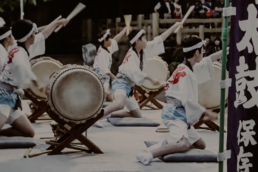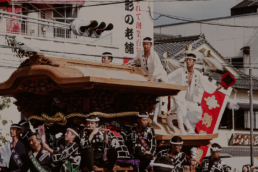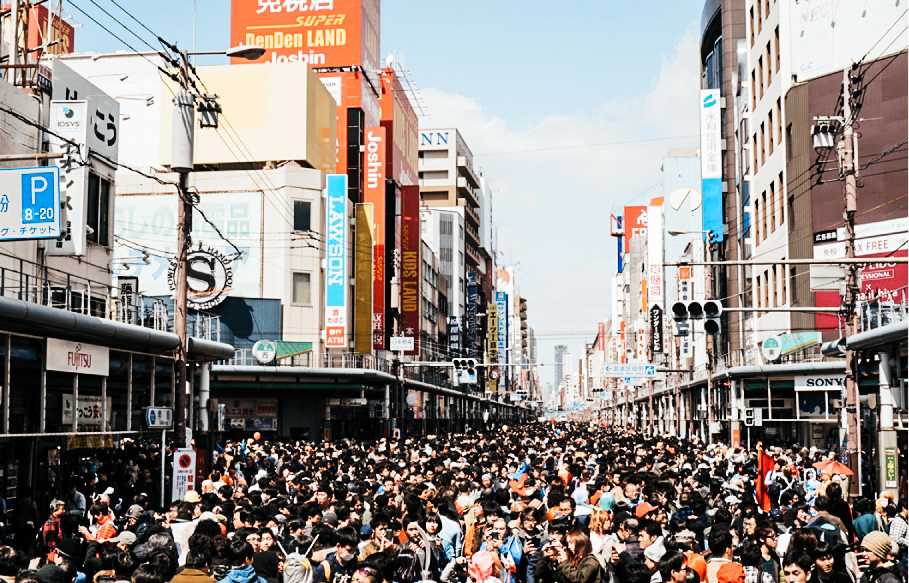Tutto ciò che c'è da sapere sui Maneki Neko
Sicuramente avrete visto i Maneki Neko, sia che voi siate o no cultori della tradizione giapponese. Vogliamo dare a questo meraviglioso e fortunato gattino giapponese un’attenzione particolare? Osserviamoli un po’ più da vicino.
Maneki Neko, il gatto porta fortuna dal Giappone
Autore: SaiKaiAngel
Noto anche come “gatto fortunato” è famoso in tutto il mondo. Il maneki-neko è un vero simbolo giapponese, con origini a Tokyo nel periodo Edo.
Originariamente i Maneki Neko erano realizzati in legno, metallo, porcellana o ghisa. Oggi si possono trovare in tutti i tipi di materiali, in particolare plastica.
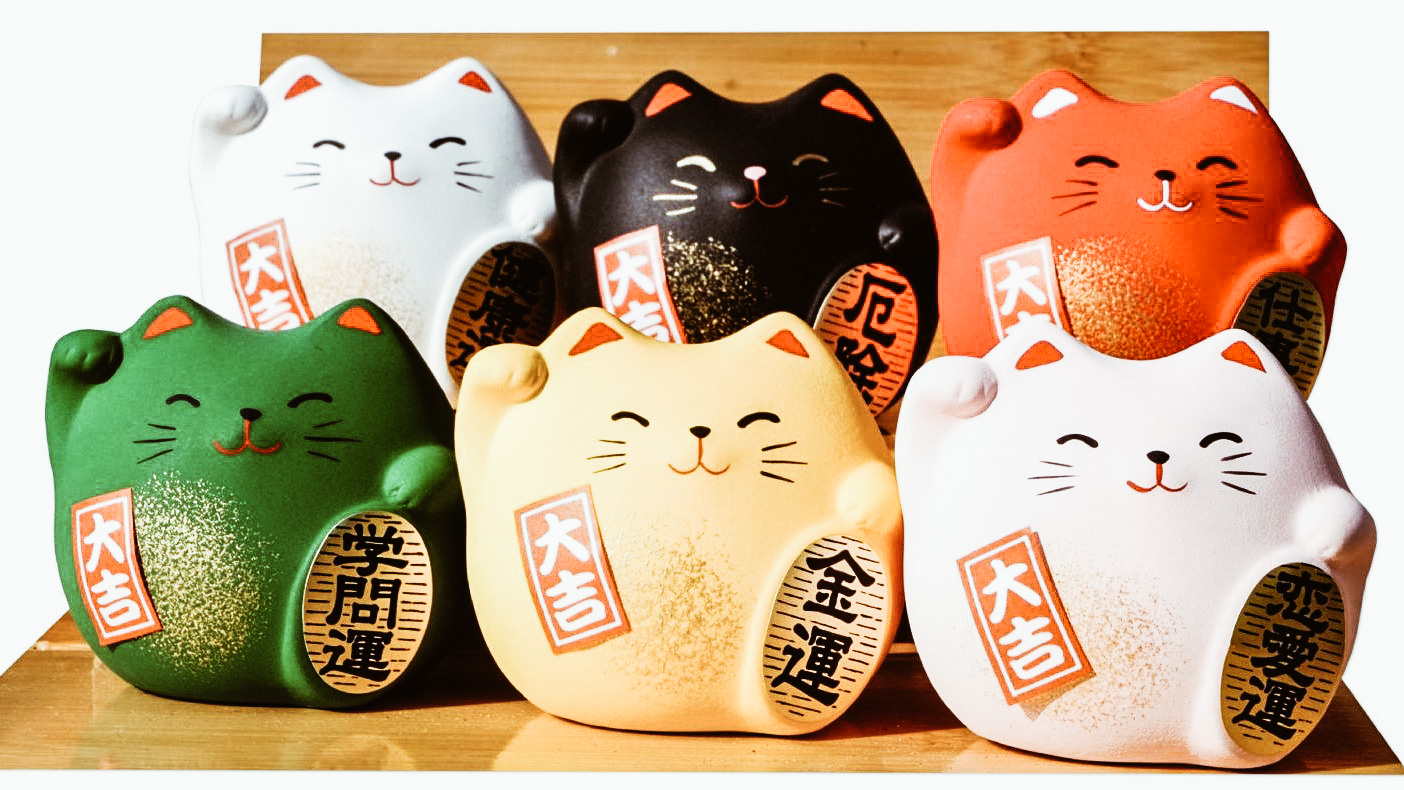
photo credits: www.dailyartmagazine.com
Le origini
Le origini sono avvolte nel mistero. Esistono alcuni racconti ed il più famoso è quello del samurai che sotto la pioggia sotto un grande albero di fronte a un tempio venne chiamato con un cenno della zampa. Il samurai quindi si diresse verso di lui e proprio in quel momento, un lampo di luce colpì l'albero sotto il quale era stato pochi istanti prima. Il gatto salvò quindi il samurai da morte certa.
Un'altra storia racconta di un negoziante che prese un gatto sotto la pioggia, e il gatto si sedette davanti al negozio, facendo cenno ai clienti di entrare, come segno di ringraziamento.
Un’altra leggenda, forse un po’ più bizzarra, ruota attorno a una cortigiana che amava il suo gatto domestico. Il proprietario, convinto che il gatto fosse posseduto, si tagliò la testa nel tentativo di esorcizzarlo, proprio mentre un serpente stava per mordere la cortigiana. La testa decapitata volò in aria e atterrò sul serpente, uccidendolo all'istante e salvando la ragazza. La ragazza si sentì disperata a causa della perdita e, per darle un sorriso qualcuno le fece una statuetta del suo gatto, sembra che così nacque il primo maneki-neko.
Le differenze tra i Maneki Neko
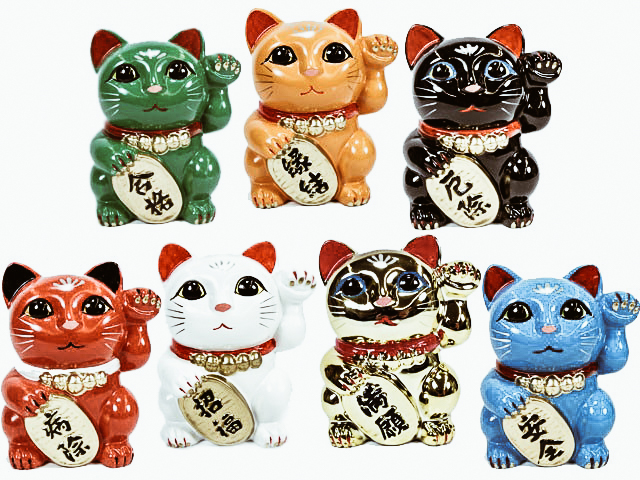
photo credits: @punamkhokhar
Questi gattini sembrano tutti uguali, ma se li guardate attentamente, potrete scoprire anche piccolissime variazioni che ne cambiano il significato.
Ad esempio, a seconda della posizione della zampa, il significato cambia
- Zampa sinistra sollevata: attira i clienti e buoni affari. Quindi con la zampa sinistra sollevata è adatto alle imprese, ai negozi e alle attività che si svolgono principalmente durante la notte come locali notturni, bar e discoteche.
- Zampa destra sollevata: augura denaro e buona fortuna.
- Entrambe le zampe sollevate: può significare "doppia fortuna!" e protezione dalla sfortuna, anche se il gesto può anche essere visto come un tifo celebrativo. Ovviamente le zampe devono essere ad altezza diversa, perchè alla stessa altezza significherebbero “arresa” e ovviamente non è il caso del nostro Maneki-Neko.
Possiamo ogni tanto anche trovare una moneta insieme al Maneki-Neko e questo, ovviamente rappresenta prosperità, ricchezza e denaro.
La pettorina e la campana sono generalmente associati alla protezione e all'abbondanza.
A chi regalare i Maneki Neko?
Ovviamente, a seconda della persona che vogliamo omaggiare, il Maneki Neko sarà posizionato diversamente. Come trovare il posto più giusto? Leggete qui:
- A casa: va posizionato nella parte sud-est della casa, che è l’ area ricchezza/denaro
- Per il lavoro: di solito il Maneki Neko viene tenuto vicino agli ingressi in modo tale che le persone che entrano possano effettivamente vederlo. Nel caso ciò non fosse possibile, può essere tenuto nell’area nord-est dei locali commerciali.
- Per gli uffici: posizionate il vostro Maneki Neko il più vicino possibile all'ufficio.
Ovviamente, anche a seconda del colore, il significato cambia, andiamo a vederli tutti:
- Tricolore: attira buona fortuna, ricchezza, prosperità.
- Bianco: colore della purezza, i Maneki Neko bianchi attirano appunto la purezza e la felicità.
- Nero: sono visti come delle guardie. Proteggono dalle energie negative e dal male. Inoltre aiutano a scacciare gli stalker e forniscono sicurezza, conforto e pace.
- Dorato: il colore dorato è associato a ricchezza e denaro. Questo Maneki-Neko attira benefici materiali e monetari e per questo si trovano molto nei negozi, ristoranti e altri luoghi di lavoro.
- Rosso: il rosso, come il nero, è un protettore ed è usato per proteggersi dal male e dalle malattie. È bene tenerne uno nella stanza dei bambini.
- Rosa: il rosa è il colore dell'amore, quindi questo Maneki-Neko attrae amore e romanticismo.
- Verde: questo Maneki-Neko aiuta gli studenti ad aumentare la concentrazione verso gli studi, proteggendoli dalle malattie ed aiutandoli a guarire nel caso ce ne fosse bisogno.
- Blu: attira pace, armonia e felicità per i membri della famiglia.
Tre modi per dire "Ti Amo"
"Ti Amo, I love you" Come dirlo in Giapponese? Ci sono tanti tipi di amore, perchè dovremmo esprimere amore solamente in un modo? I giapponesi la sanno lunga, sanno che ogni tipo di amore ha bisogno di un modo per essere espresso, un modo completamente personale.
Ti amo / I Love you, ecco come dirlo in Giapponese
Autore: SaiKaiAngel | Fonte: SoraNews24
Tutto questo, pensate, accade in un paese che è visto come “freddo e distante”. Forse, pensando a questo, dovremmo capire che freddo e distante non è, anzi. E’ un paese che dà la giusta importanza sia alla storia, sia alla tradizione che ai sentimenti.
Cominciamo a guardare tutti i modi di dimostrare amore in giapponese, analizziamoli uno ad uno.
1. Suki - "Mi piaci"

Questo è il modo più usato e più famoso, perchè si trova in molti testi dell’animazione giapponese. Lo analizziamo per primo anche perchè è il meno “profondo”, infatti più che amore, può significare anche “mi piace”. Puoi tranquillamente dire "Ramen ga suki desu" che nessuno ti vedrà come un pazzo innamorato di un piatto di ramen, bensì tutti capiranno che a te piace il ramen. Così si può usare suki per esprimere appunto un apprezzamento per un cantante o un attore.
Proprio per questo, suki può creare della confusione. Se sentiamo questa parola, si potrebbe incorrere nella domanda se piacciamo per davvero come persona o semplicemente come un piatto di ramen, appunto. E’ un significato molto flessibile, per niente sicuro, nonostante tutto viene utilizzato all’inizio di ogni storia d’amore. Quando vuoi dichiararti a qualcuno, puoi usare suki desu per farlo. Molto importante a quel punto, sarà il MODO in cui lo fai, devi fare in modo di far capire all'altra persona che hai intenzioni serie e non sei solamente un piatto di ramen. Ci vuole convinzione nella voce, non è un semplice “mi piace”. Con una grande convinzione, allora avrà la colorazione giusta dell’innamoramento.
2. Koi - I love you

Non stiamo parlando della carpa, ma del secondo modo che i giapponesi usano per parlare d’amore. Qui siamo nel campo dell’ “amore romantico”. Koi è l’'emozione giovane e passionale, ma viene raramente usato per dire “ti amo”. Possiamo forse avvicinarlo ad "I love you" degli americani, che può voler dire sia ti amo che ti voglio bene. Tuttavia, Il verbo koi suru è più vicino a "essere innamorato" o "essere romanticamente coinvolto". Infatti, la parola Koi viene usata per Koibito che significa amante.
3. Ai - Ti amo

Ed eccoci arrivati al più famoso, il termine più usato per la parola Amore.
Ai è un sostantivo che significa "amore", ma può essere usato per qualcosa di più del semplice affetto romantico. Ai o la variante aijo, vengono usate anche per parlare dei concetti di amore verso la famiglia, per un amore platonico oppure per tutta l'umanità. Usato come verbo, diventa ai suru.
Allora perchè usiamo suki desu per confessare il nostro amore? Semplicemente perchè ai è un sentimento molto più serio ed impegnato. Ai suru sarebbe un po’ … spaventoso, soprattutto per una storia appena iniziata. Bisogna andare per gradi e Suki desu è ciò che ci permette di farlo. Sarebbe meglio anche cambiare il verbo suru in shiteiru. Dicendo al tuo partner ai shiteiru, dimostri un amore continuo, non semplicemente una cotta iniziale. Per quanto mi riguarda è il termine che mi piace di più, anche perchè il primo che io abbia mai sentito.

Cosa ci fa capire tutto questo? Che il giapponese è una lingua molto romantica nonostante quello che si senta in giro. I giapponesi sono freddi? Tutta impressione. I giapponesi sanno dare il giusto significato e la giusta profondità a qualsiasi cosa, anche ad ogni tipo di amore. Che termine usereste voi per il vostri amore?
Atsuta Matsuri, lanterne e fuochi artificiali
Tanti sono i matsuri giapponesi ma oggi decidiamo di concentrarci sull'Atsuta Matsuri, nella prefettura di Aichi.
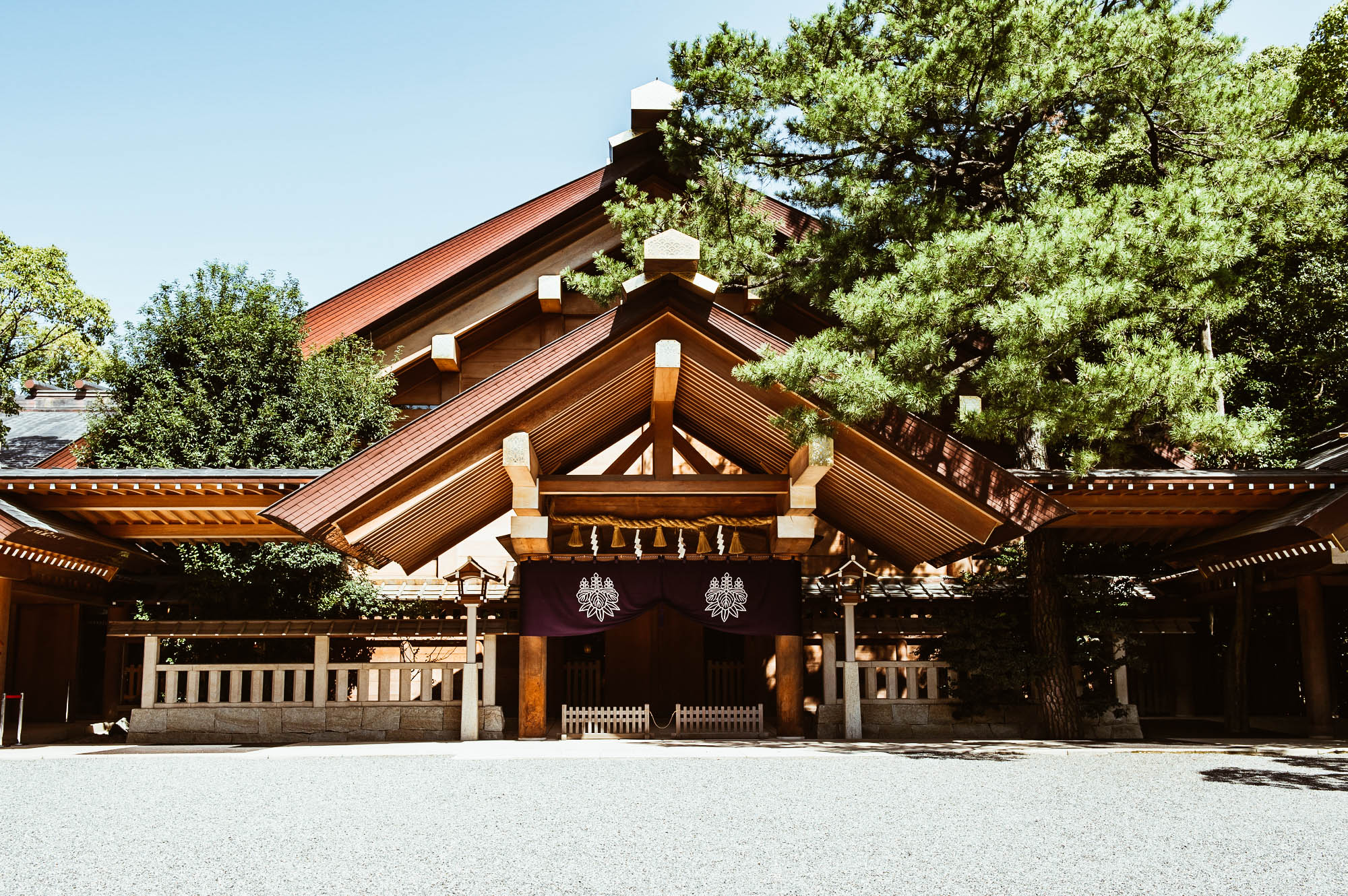
photo credits: thegate12.com
Nella regione di Chubu, più precisamente a Nagoya nella prefettura di Aichi, se ci addentriamo nella città, nascosto tra secolari cipressi, scopriremo uno dei santuari più sacri del Giappone: l’Atsuta Jingu. Venerato sin dall’antichità con i suoi 1900 anni, si ritiene sia la casa della Sacra Spada Kusanagi dell'Imperatore, una delle tre insegne imperiali.
In questo luogo magico, ogni anno, il 5 giugno si tiene l’Atsuta Matsuri (諸ブー祭), meglio conosciuto come Shobu-sai.
La giornata dell'Atsuta Matsuri
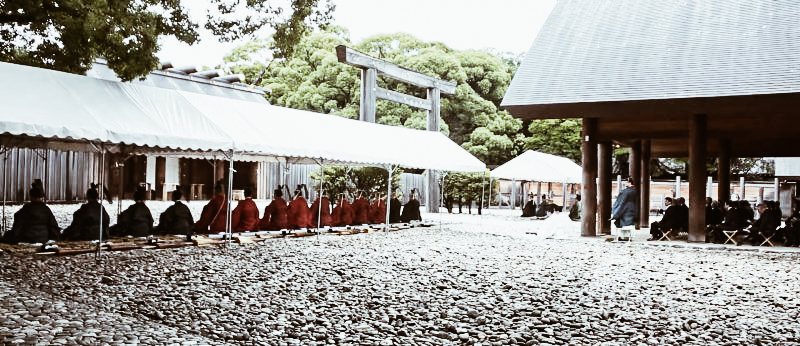
photo credits: kawaii-aichi.jp
Attorno alle 10:00 del mattino i festeggiamenti iniziano con una cerimonia speciale in cui un messaggero imperiale viene inviato al santuario per offrire le goheimotsu. Queste infatti sono strisce di carta bianca per i rituali shintoisti e che servono a celebrare una cerimonia speciale dedicata agli dei e alle dee dell’Atsuta Jingu. Dopodichè questo splendido e caratteristico Matsuri ospita vari spettacoli tra i recinti del Santuario.
Gli spettacoli
Gli spettacoli durante questo festival sono molti e di vario tipo, fra cui Il kyudo, tiro con l'arco in stile giapponese e il kendo, scherma giapponese. Ma il vero protagonista è l’Atsuta-kagura, un tipo di danza shintoista tradizionale locale accompagnata da flauti e dai taiko, i tipici tamburi giapponesi. Oltre a questo, troviamo varie esibizioni fra cui il Sumo e competizioni di intrattenimento come il Kodomo Mikoshi, i santuari portatili per bambini!


photo credits: kawaii-aichi.jp, goinjapanesque.com
Il Festival raggiunge il culmine del fascino quando, alle 18:00, i cinque makiwara kento, enormi altari allegorici decorati da 365 lanterne ciascuno, sono sistemati accanto agli ingressi delle tre porte torii del santuario e vengono illuminati. Naturalmente non mancano le bancarelle che offrono tipicità e souvenirs di ogni genere.
Il chiacchiericcio delle persone si arresta alle 21:00 al parco Jingu Koen quando uno stupendo spettacolo pirotecnico fa alzare le teste al cielo e riempie gli occhi di luci e colori.


photo credits: goinjapanesque.com
Il festival di Atsuta è il più grande festival tra i circa 70 eventi che si tengono al Santuario di Atsuta ogni anno.
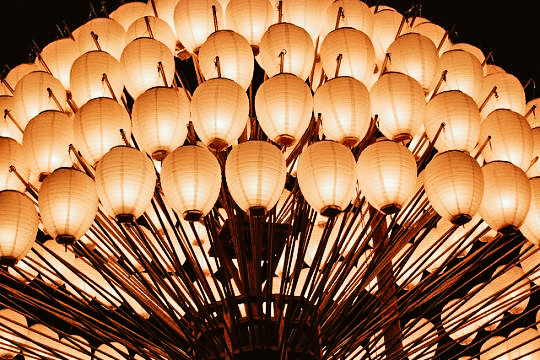

photo credits: nagmag.jp, kichijapan.com
Se vi trovate nei dintorni, non perdete questi magici spettacoli di lanterne e fuochi d'artificio per trascorrere una giornata divertente all’insegna della tradizione! Come ogni festival la partecipazione è gratuita. Per ogni informazione su come raggiungere la location, visitate il sito ufficiale del Santuario in inglese.
Kitsunebi Matsuri, quando il folklore prende vita
Nell’antico folklore giapponese, il Kitsunebi (狐火, fuoco di volpe) era uno yōkai che, durante la notte, appariva improvvisamente sotto forma di luce incandescente dal colore rosso-arancione e talvolta anche blu. I Kitsunebi aumentavano gradualmente fino a coprire vaste aree, raggiungendo anche i 4km! Si credeva che fossero torce di una processione di volpi che marciavano per le proprie nozze. Le luci venivano avvistate dagli agricoltori sulle montagne ed erano considerate un buon presagio per il raccolto. Infatti, maggiore era il numero di luci vista, più fruttuoso era il raccolto. Tuttavia a nessun umano era concesso di avvicinarsi: coloro che ci provavano erano condannati a svanire.
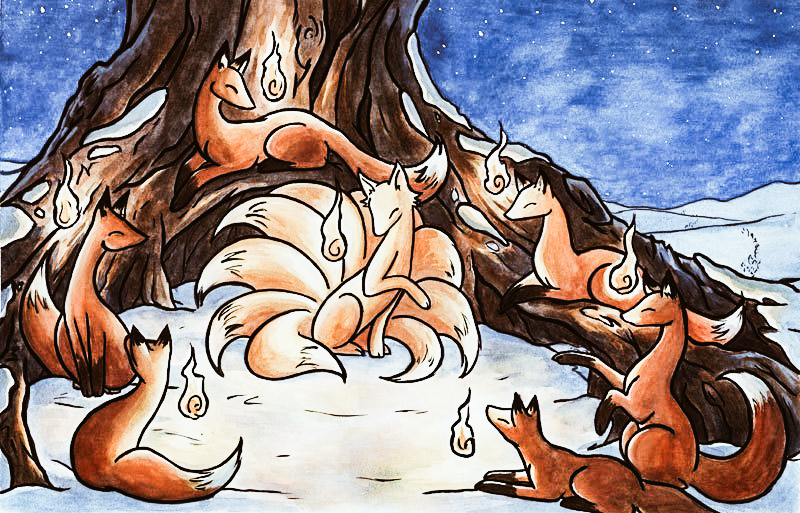
photo credits: tradurreilgiappone.com
In particolare, nelle storie si racconta del matrimonio tra Otonosama, il re che viveva a Furukawa, e Okon, la figlia del dio volpe. Questa affascinante immagine è l’origine su cui affonda le sue radici l’Hida Furukawa Kitsunebi Matsuri (騨古川きつね火まつり). Questo festival si celebra ogni anno, il quarto sabato di settembre a Hida Furukawa, cittadina pittoresca e rurale ricca di splendidi paesaggi, dove ancora oggi si respira una vita lontana dalla frenesia delle metropoli.
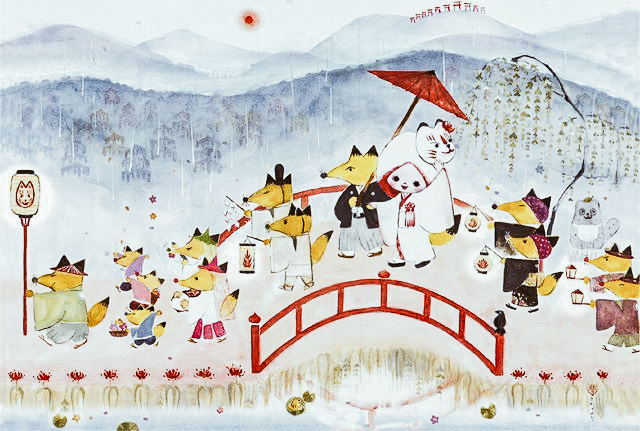
photo credits: tradurreilgiappone.com
Felicità e prosperità!
Come quasi tutti i festival a cui ormai siamo abituati, anche il Kitsunebi Matsuri ha come scopo le benedizioni per il raccolto, la felicità e la prosperità per le famiglie.
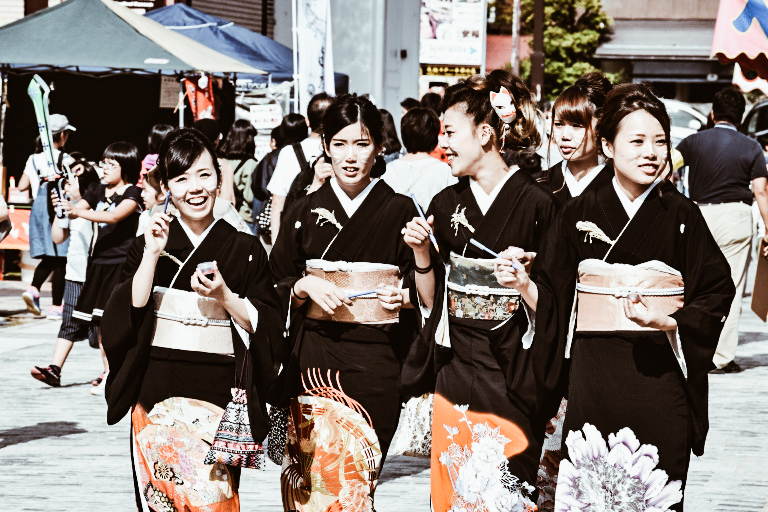
photo credits: myjapantravels.wordpress.com
Ma in cosa consiste esattamente il Kitsunebi Matsuri?
Prima di tutto, tutti i partecipanti hanno i baffi di volpe disegnati sul volto, che sia bambini o anziani, negozianti sulla strada oppure turisti. Si comincia con la benedizione delle imprese locali: i danzatori trasportano porta a porta un dongamaki, serpente di corda lungo 5 metri.
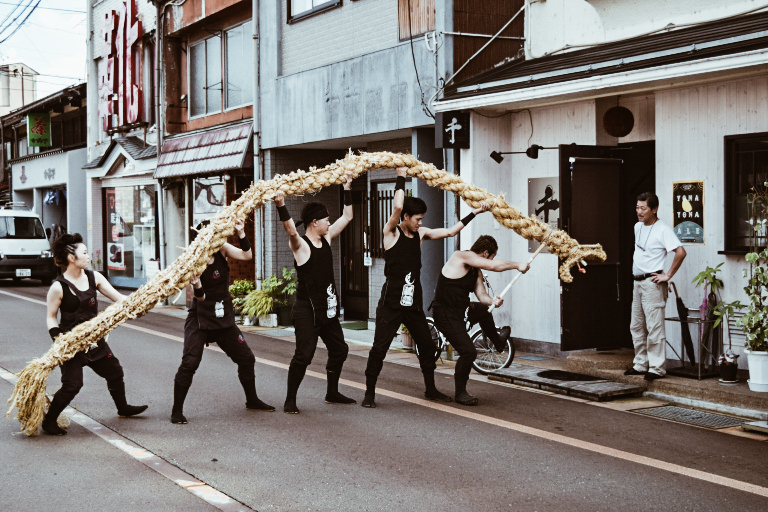
photo credits: myjapantravels.wordpress.com
Dopo di chè ha inizio l’evento principale. Su due piedi si potrebbe dire che si tratti di un matrimonio, ma non uno comune, bensì una processione solenne in cui si celebrano le nozze delle volpi, il Kitsune no Yomeiri.

photo credits: myjapantravels.wordpress.com
I futuri sposi, una coppia legata nella vita reale, vengono scelti da un pool di candidati a livello nazionale nella cittadina in cui si terrà la cerimonia nuziale. La lunga marcia condurrà la sposa dallo sposo al calare della notte, quando il Kistunebi ha inizio (una fiaccolata). Coloro che assistono a tutta la processione saranno benedetti e potranno esprimere un desiderio come un buon raccolto, oppure la felicità per la propria famiglia o la prosperità negli affari.

photo credits: tokyopic.com
Una romantica curiosità
Dal 1392, per tutto il periodo Muromachi fino alla fine del XIX secolo, quando le cerimonie nuziali occidentali sostituirono le tradizionali cerimonie giapponesi, i matrimoni si tenevano di notte e la sposa veniva scortata nella sua nuova casa da una parata di luci.
Il Kishiwada Danjiri Matsuri e l'euforia dilagante
Ritorniamo a raccontarvi dei festival giapponesi e oggi parliamo del Kishiwada Danjiri Matsuri.
Ogni anno, generalmente durante un fine settimana a metà settembre, le strade di Kishiwada, piccola cittadina vicina ad Osaka, sono invase dal fervore e dall’euforia del Kishiwada Danjiri Matsuri (岸和田だんじり祭).
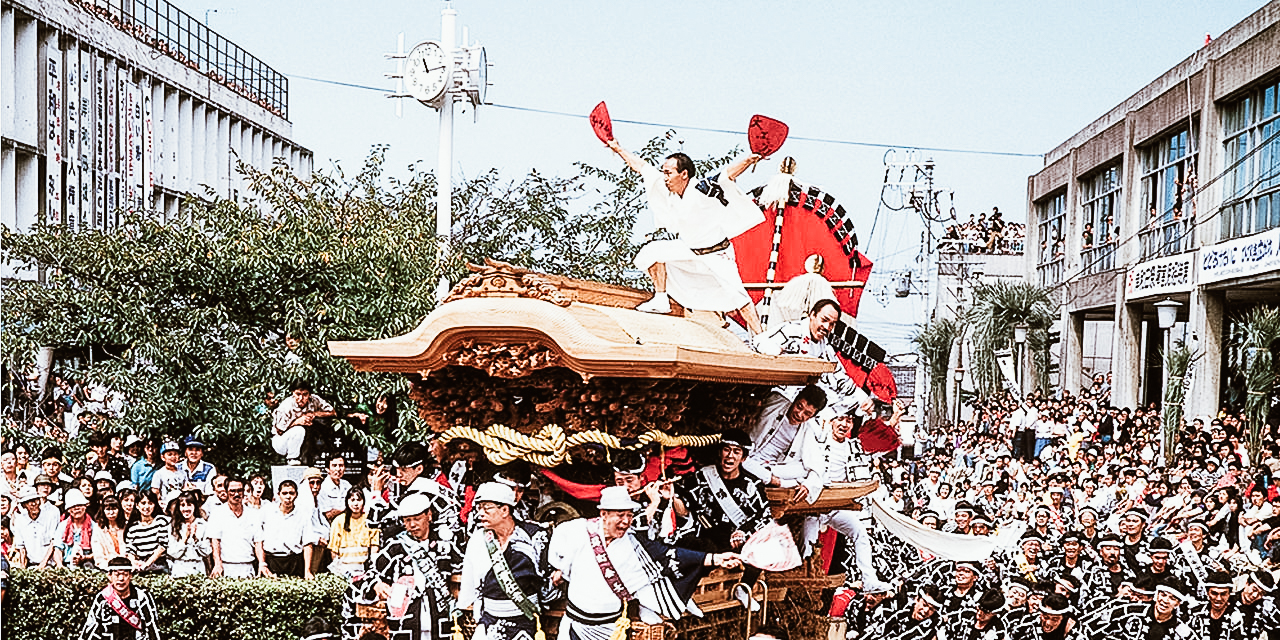
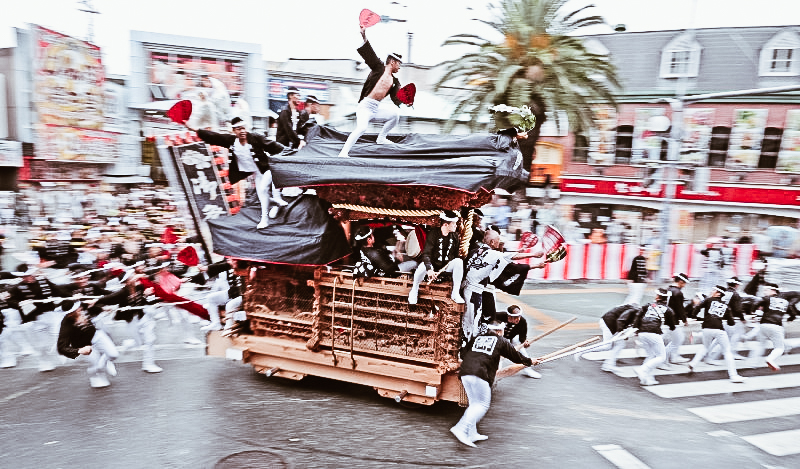
photo credits: airfrance.co.za, mainichi.jp
Le celebrazioni ebbero origine nel 1703, ad opera del daimyō Okabe Nagayasu (岡部長泰). Egli pregò gli dei shintoisti per un raccolto abbondante e questo è ancora il significato del festival. Tuttavia, ciò che rende particolare questa celebrazione è che si tratta di una gara di velocità trainando i danjiri.
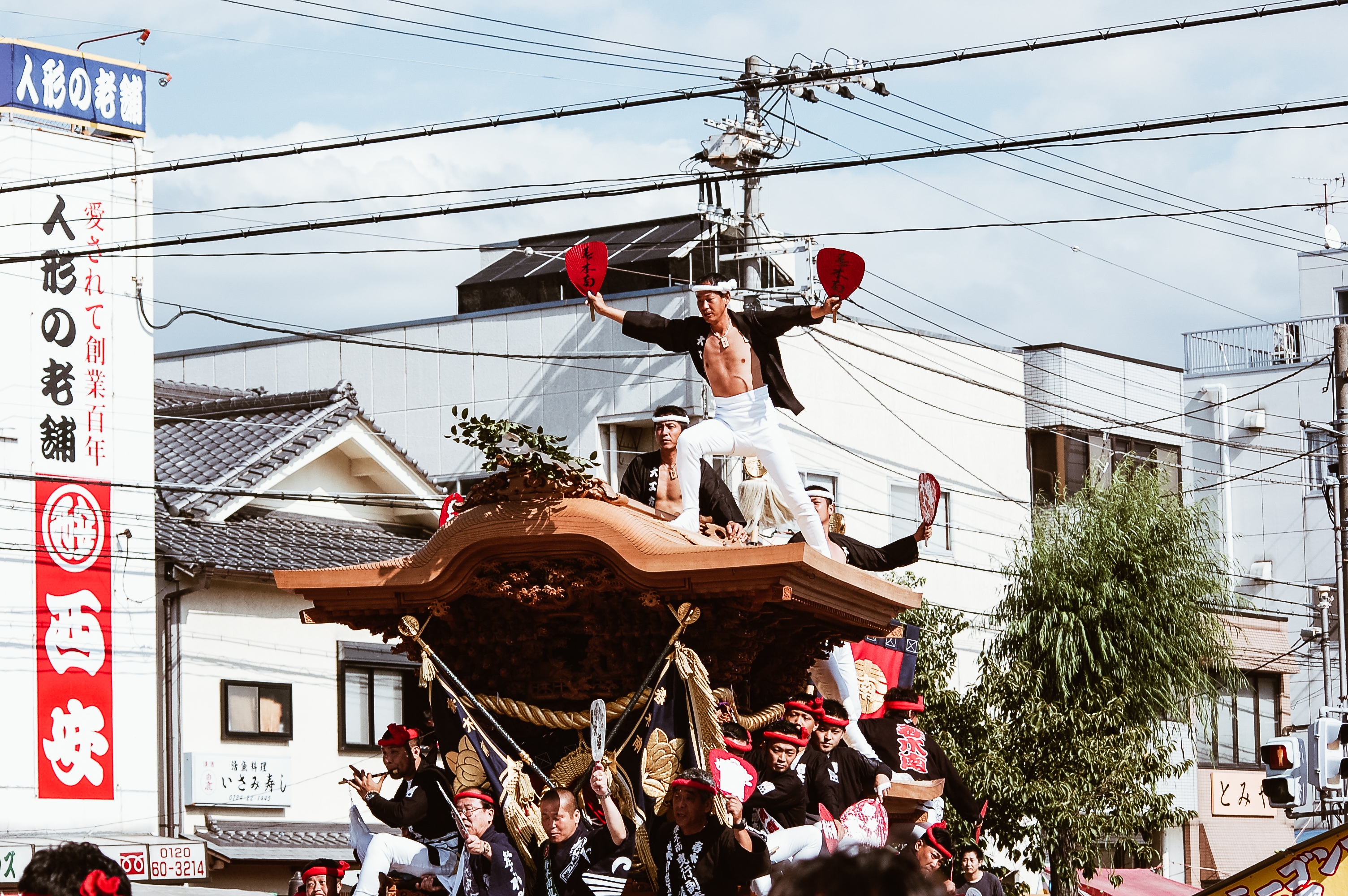

photo credits: Justin Yoshida
I danjiri sono delle tradizionali strutture in legno, intagliati e finemente decorati realizzati da abili falegnami e scultori locali. Questi carri hanno la forma di piccoli santuari contenenti le divinità e, nei giorni del festival, vengono appunto trascinati per le strade del quartiere. Visto il loro peso (possono superare i 3 quintali), il festival è anche considerato un momento per dimostrare il proprio coraggio. Infatti, queste strutture devono essere trainate con il solo aiuto delle corde e a tutta velocità!
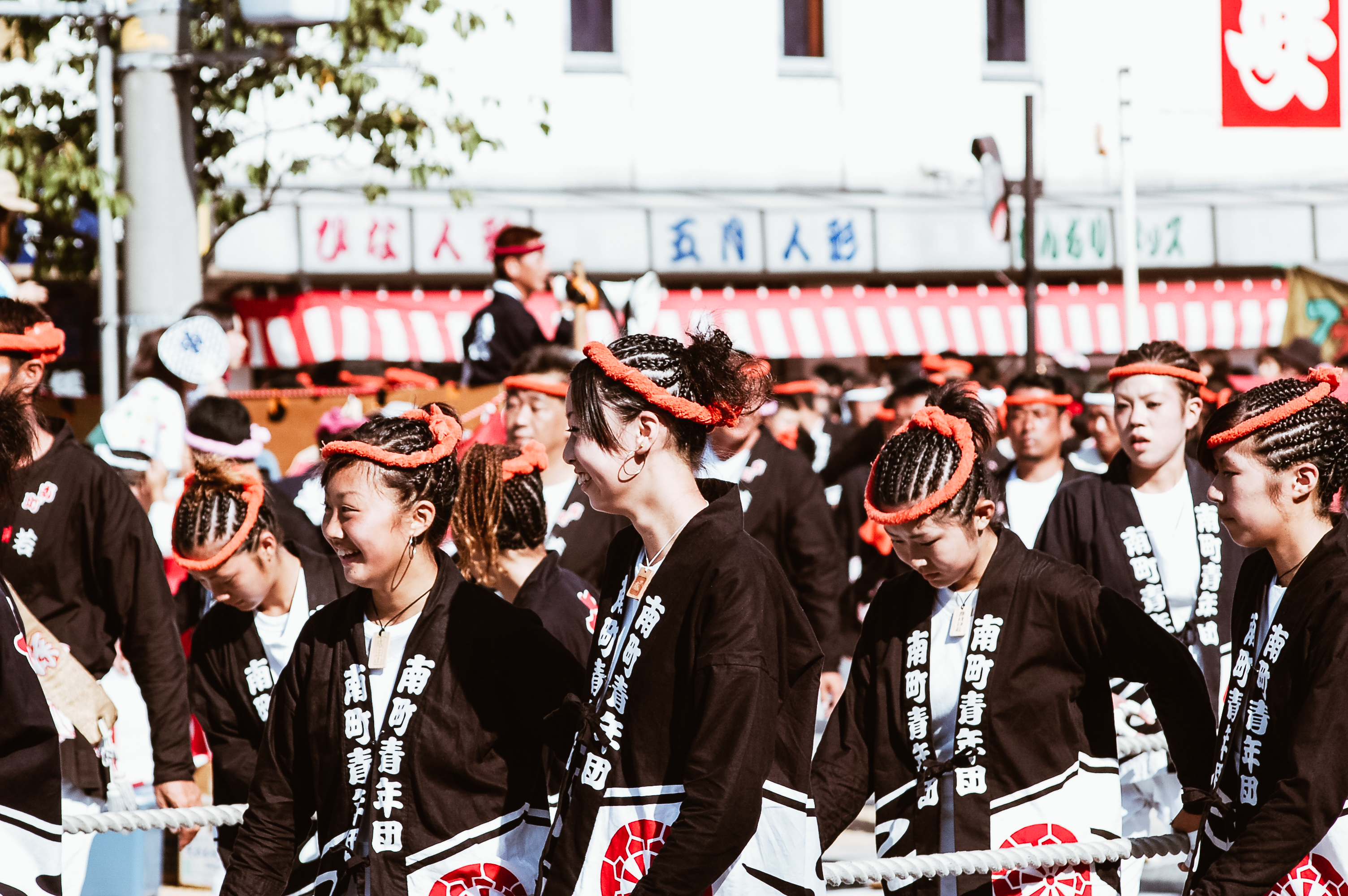
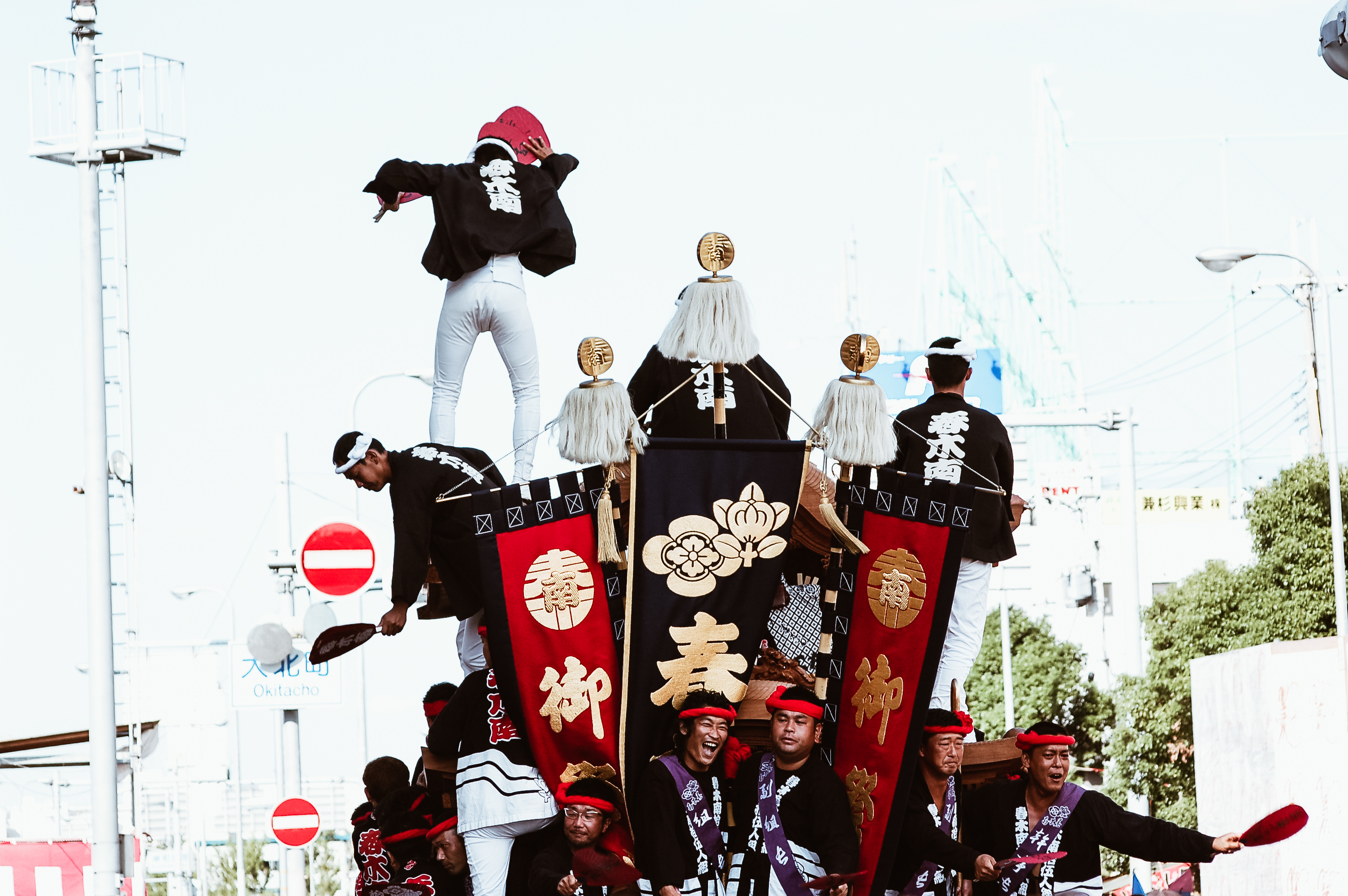
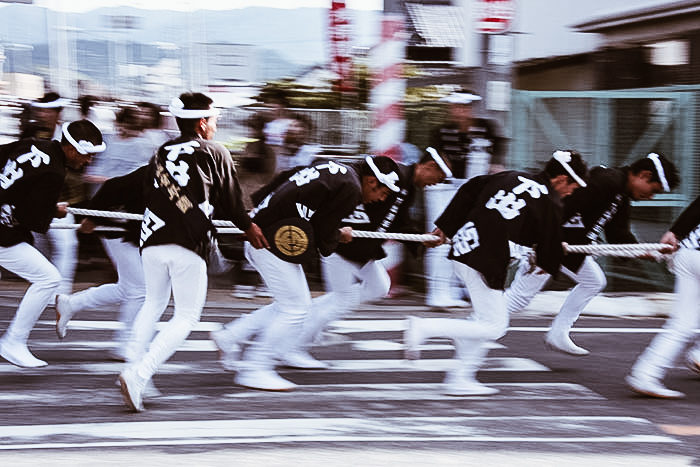

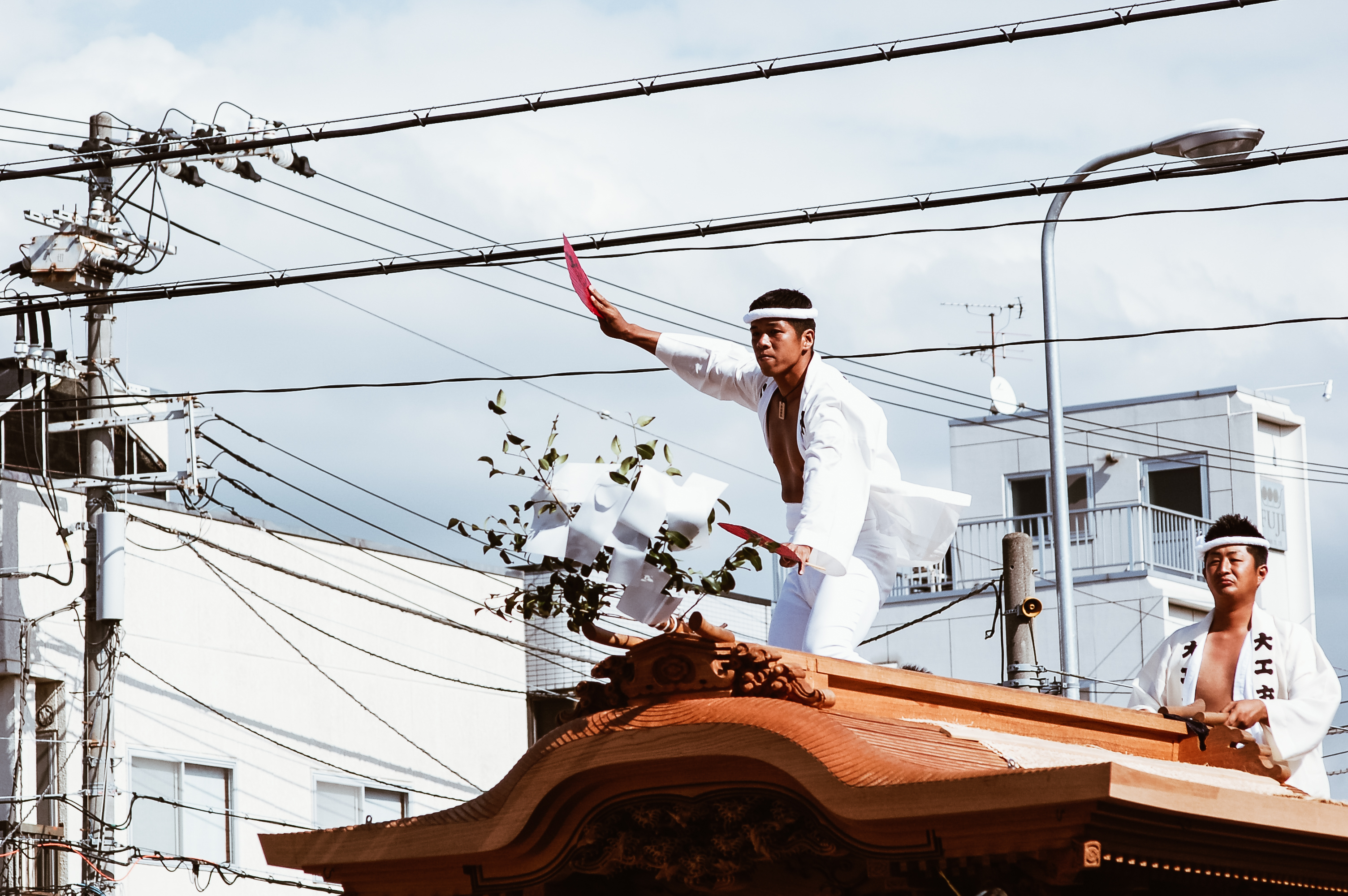
photo credits: Justin Yoshida, Justin Yoshida, japan-magazine.jnto.go.jp, MJY-shogun, Justin Yoshida
Le celebrazioni del Kishiwada Danjiri Matsuri
Durante le celebrazioni del festival i danjiri coinvolti sono 35, ognuno di essi trainato da un team, rappresentanti il rispettivo distretto della città. Al controllo della struttura, sulla sua cima, c’è il daiku-gata (大工方, maestro artigiano) la cui danza selvaggia serve da incoraggiamento per la propria squadra e la folla. Viste le acrobazie in cui si cimenta, il maestro artigiano rischia costantemente la vita, ma non solo! Come possiamo facilmente immaginare, questo festival è anche pericoloso per tutti gli altri partecipanti a causa della velocità vertiginosa dei danjiri. Le schegge di legno che si lasciano alle spalle e le sgomitate per seguirli costituiscono un pericolo per la folla. Quattro ore di corsa a perdifiato che si conclude con una grande bevuta attorno al proprio carro, a cui vengono appese decine di lanterne di carta.
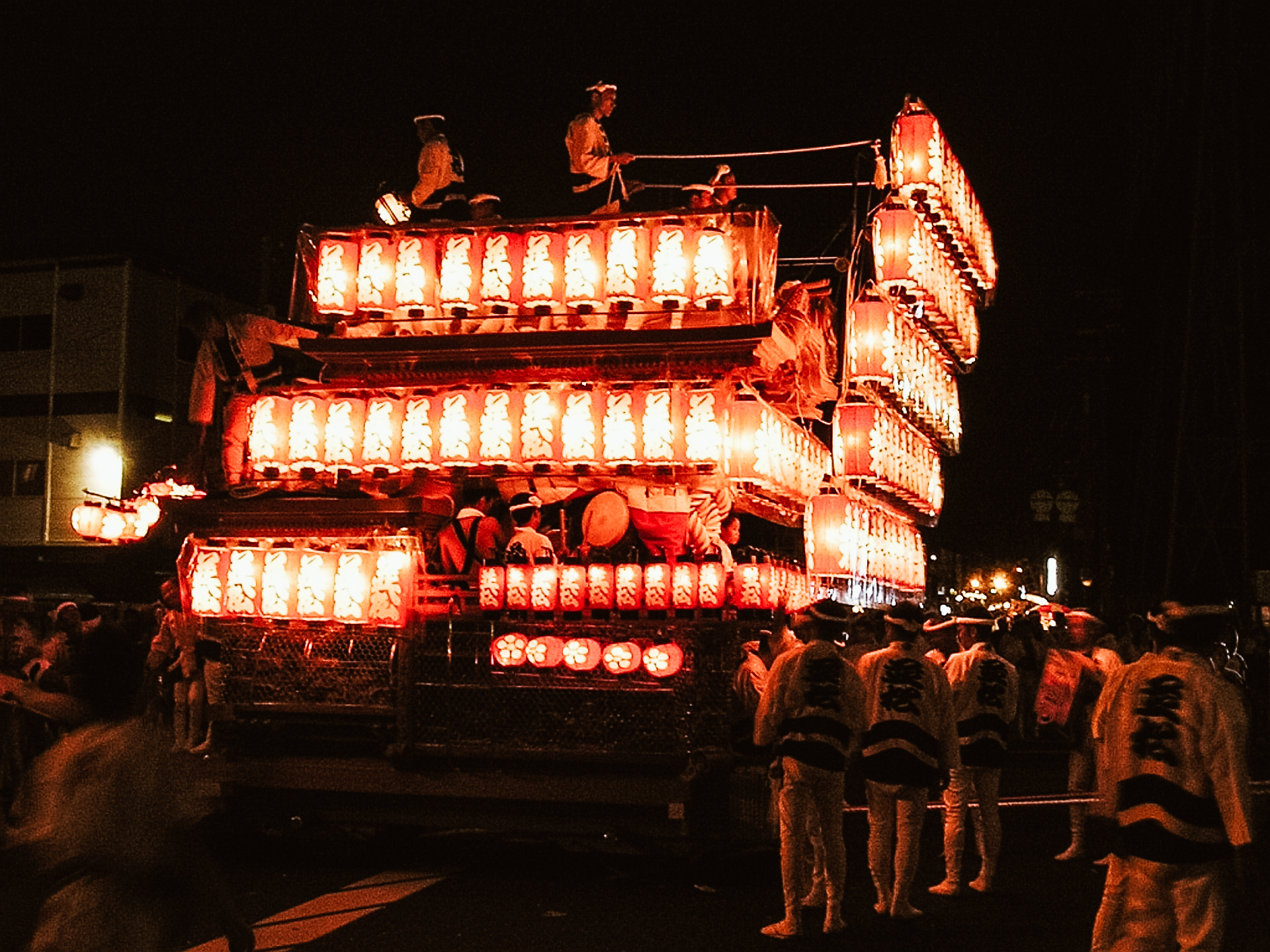
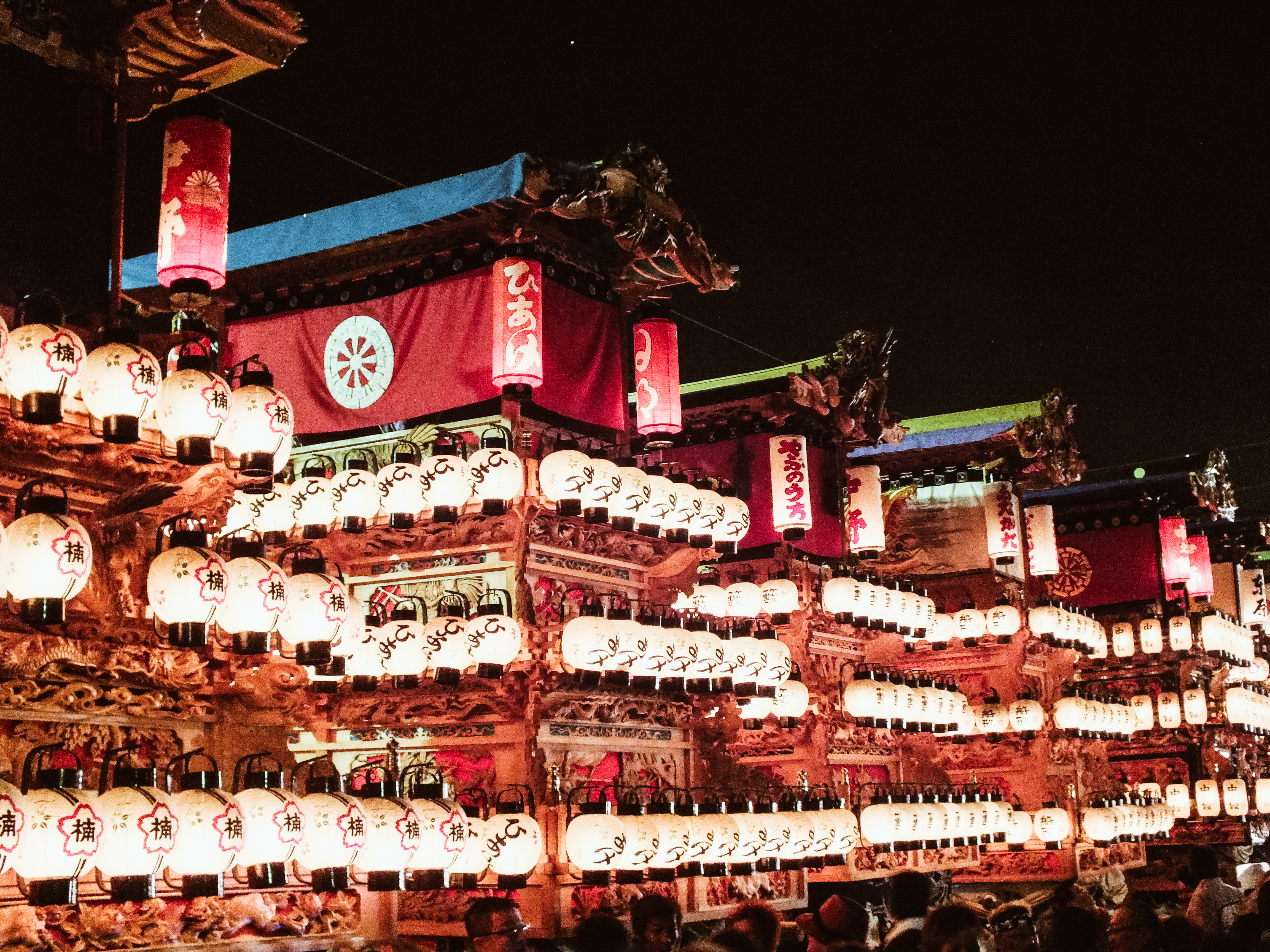
photo credits: rove.me, Gavin Kealy
Più di 500,000 visitatori arrivano a Kishiwada per vivere il brivido di questa celebrazione, voi cosa ne pensate? Trovate elettrizzante questa parata?[:en]Let's return to talk about Japanese festivals and today we talk about the Kishiwada Danjiri Matsuri.
Yuki-Onna: la misteriosa incarnazione dell’inverno giapponese
Nello sterminato mondo degli yokai (creature soprannaturali della tradizione giapponese), spicca la figura della Yuki-Onna (雪女). Leggendaria donna delle nevi, col suo fascino algido e letale incarna la terribile bellezza dell’inverno nelle montagne del Giappone.
Pur essendo conosciuta con nomi e storie differenti nelle diverse prefetture, questo personaggio è rinomato soprattutto delle zone più fredde ed impervie dell’arcipelago.
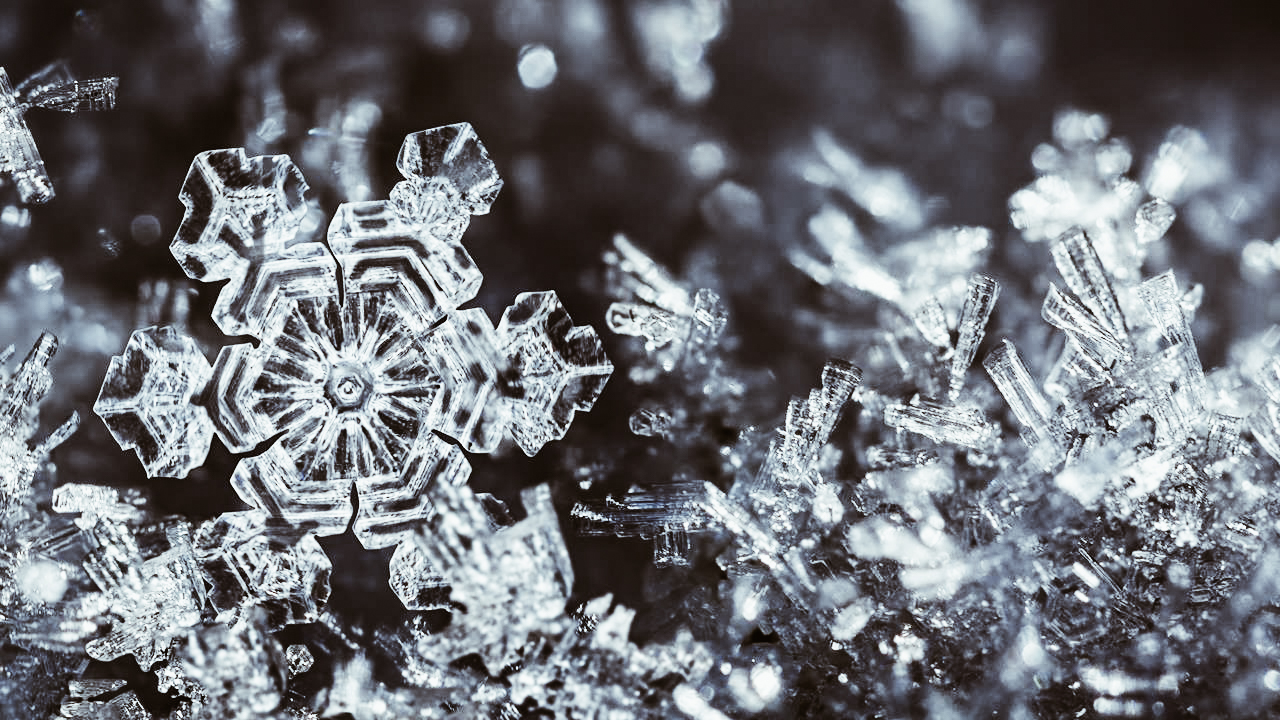
La Yuki-onna viene descritta come una donna bellissima dalla pelle candida, che appare sui sentieri di montagna e nelle tempeste di neve. La raffigurano vestita di un leggero kimono bianco o nuda e coperta solo dai lunghissimi capelli, neri o candidi a seconda delle leggende. Apparizione eterea e fluttuante nel paesaggio innevato sul quale non lascia impronte, può improvvisamente scomparire trasformandosi in una nube di nebbia o di neve finissima.
Yuki-Onna: le Origini
L’origine di questa figura, come di altri yokai, si perde nei tempi più antichi. La prima traccia scritta della sua storia si ritrova nel Sōgi Shokoku Monogatari, risalente al periodo Muromachi (1333-1573). Qui il monaco Sogi descrive l’incontro con una donna di straordinaria bellezza durante la sua permanenza nella provincia di Echigo (attuale prefettura di Niigata). Questa donna misteriosa era vestita di bianco, alta e dalla carnagione pallidissima e con lunghi capelli candidi. Dall’aspetto di giovane età, ella apparve misteriosamente un mattino nel giardino ghiacciato del monaco. Tuttavia, scomparve altrettanto misteriosamente sotto lo sguardo incredulo dell’uomo.
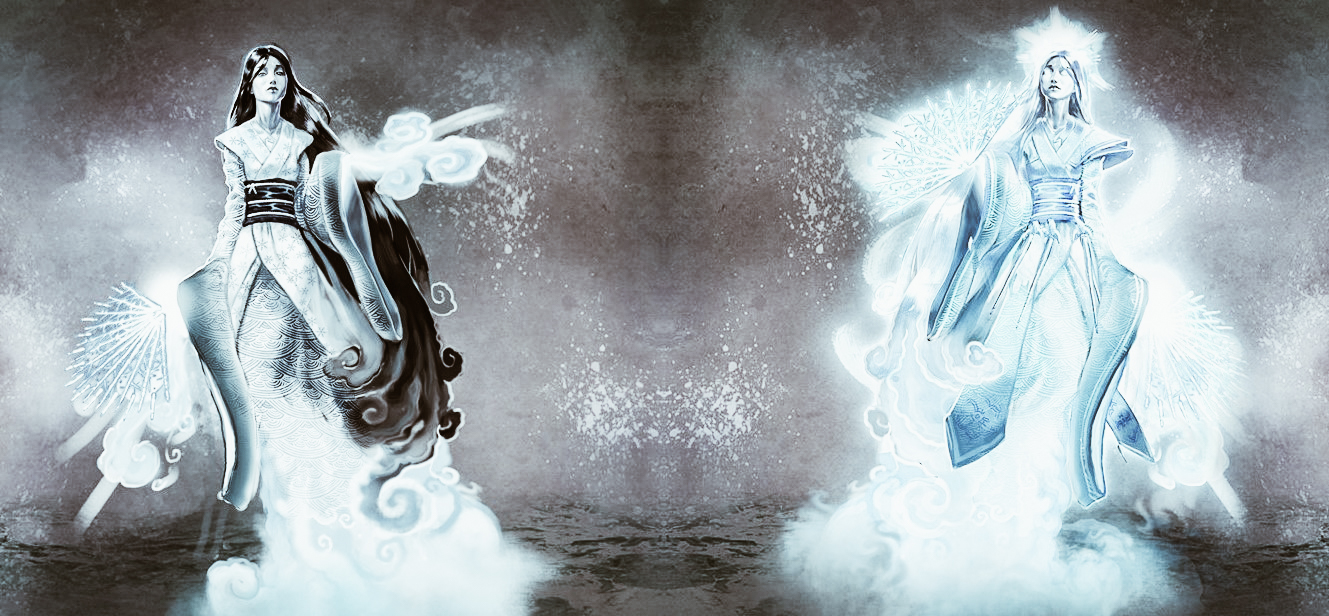
photo credits: smitefire.com
I due volti dell’inverno
Come l’inverno che può manifestarsi con un abbagliante e sereno splendore oppure con una forza crudele e letale, così è la Yuki-onna. A volte essa appare come una spietata predatrice che attrae i viandanti smarriti nella tormenta per nutrirsi vampirescamente della loro energia vitale. Altre volte appare come una presenza benevola o addirittura a sua volta sedotta dal fascino umano.
Nelle storie più antiche prevale l’aspetto mostruoso e distruttore. Infatti in questi racconti, i genitori che hanno smarrito i propri figli in montagna vengono avvicinati da una donna. Essa chiede loro di prendere in braccio un bambino che lei stessa non riesce a portare. Gli incauti che accettano tale invito sono destinati a morire assiderati, sopraffatti dalla stanchezza di portare un fardello più pesante ad ogni passo.
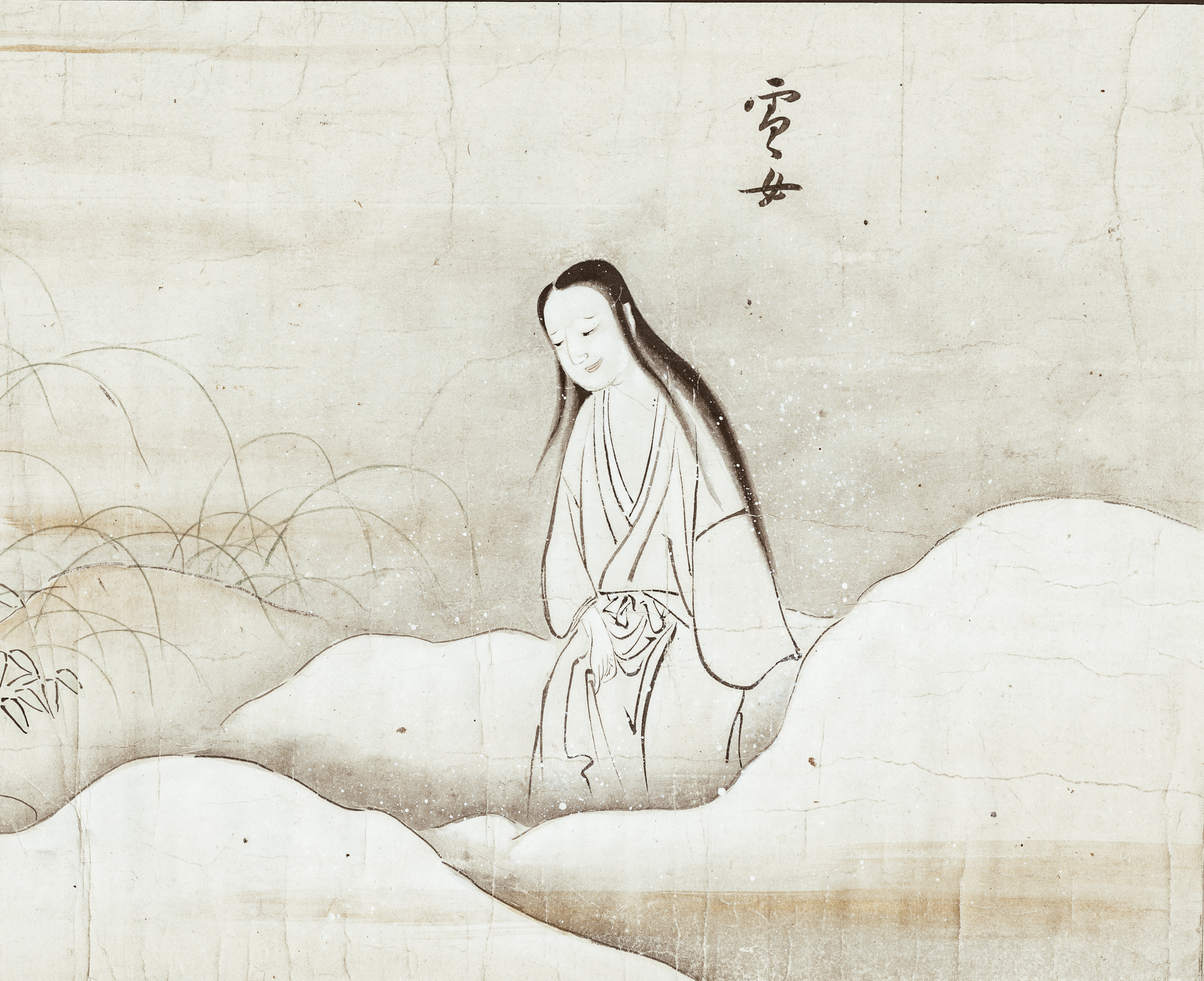
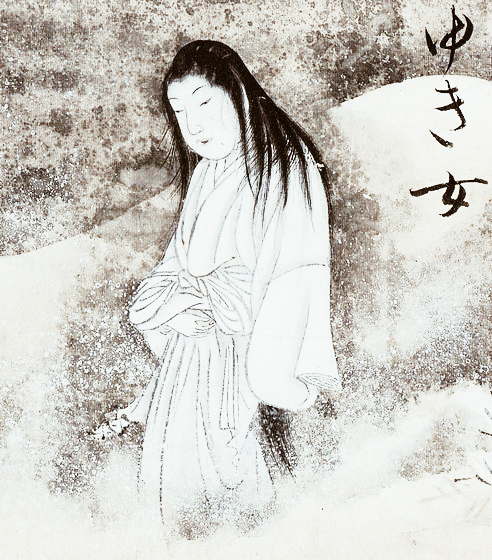
photo credits: wikipedia.org
Oppure in altre storie, la Yuki-Onna seduce uomini soggiogati dal suo fascino ultraterreno. Questi finiscono per soccombere al suo bacio mortale, capace di prosciugare la loro forza vitale e congelare i loro cuori. O ancora in racconti drammatici, in cui la Yuki-Onna non si limita ad attendere il passaggio di viandanti disorientati. Qui infatti, essa entra prepotentemente nelle case, spalancando porte e finestre sotto forma di violente tormente di neve uccidendo i malcapitati abitanti.
In Occidente conosciamo un aspetto più romantico di queste leggente. Questo avviene soprattutto grazie all’opera di Patrick Lafcadio Hearn, giornalista e scrittore irlandese naturalizzato giapponese, conosciuto anche come Koizumi Yakumo (小泉八雲).
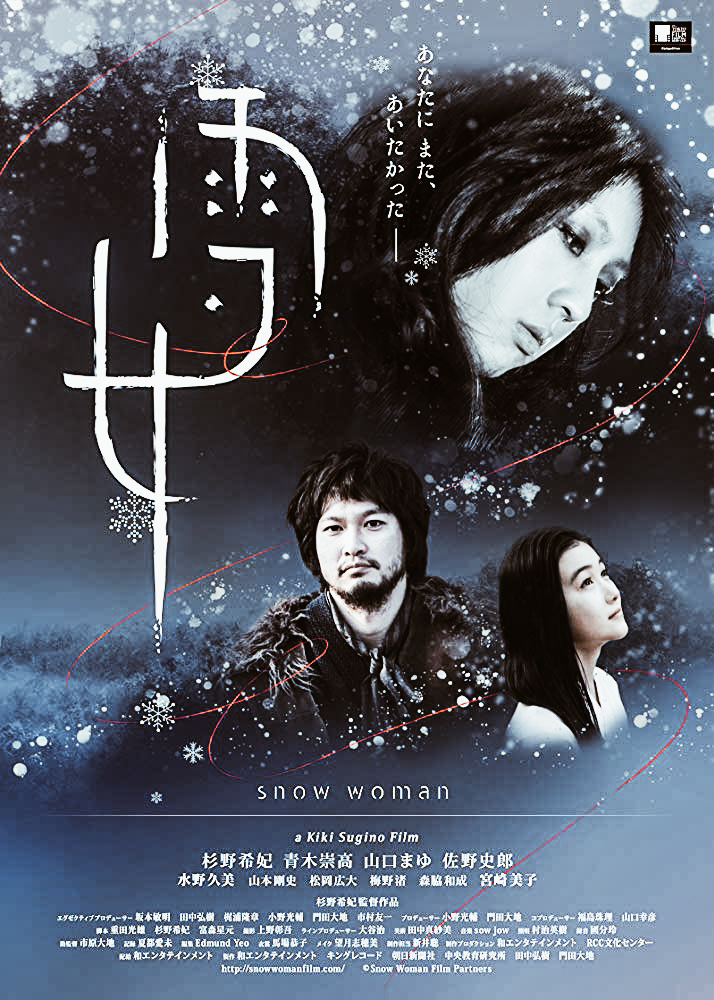
photo credits: letterboxd.com
La versione di Lafcadio
“Kwaidan: Stories and Studies of Strange Things” è opera del 1904 contenente una raccolta di credenze popolari e anche un'interpretazione della cultura e dei costumi del Giappone. Qui la leggenda narrata da Hearn parla di due boscaioli, l’anziano Mosaku ed il suo giovane apprendista Minokichi, che tornano a casa dopo una giornata di lavoro in una fredda sera. I due personaggi sorpresi da una violenta tempesta di neve, trovano riparo in una capanna vicino ad un fiume. A seguire, i due uomini si adagiano sul pavimento della capanna e vinti dalla fatica si addormentano. Durante la notte Minokichi viene svegliato da un vento gelido, che sembra aver spalancato porta e finestre della capanna. Ancora confuso dal sonno e credendo di sognare, vede una donna vestita di bianco e dalla lunga chioma, china su Mosaku, intenta ad alitare su di lui un gelido fiato simile a nebbia.
Quando la donna si volta verso Minokichi, il giovane rimane come incantato dalla sua incredibile bellezza. Tuttavia, non riesce a sostenere quello sguardo che gli incute un indicibile terrore. Intenerita dalla giovinezza e dall’avvenenza del ragazzo, la donna decide di risparmiare la sua vita a condizione che egli non riveli mai a nessuno l’esistenza di una tale creatura. Se mai dovesse parlare a qualcuno di quegli eventi, la sua morte sarebbe certa.
Il mattino seguente un barcaiolo, proprietario del capanno, trova nel suo interno il corpo ormai congelato dell’anziano Mosaku, ma riesce a trarre in salvo Minokichi, ormai semi assiderato.
Un anno dopo...
Superati ormai il terrore e lo spossamento di quella terribile notte, il giovane prende in sposa una bellissima giovane donna di nome O-yuki. Improvvisamente comparsa nel suo villaggio ella fu subito ben voluta da tutti per il suo fascino ed i suoi modi gentili. Per molti anni i due vivono un matrimonio felice, benedetto dall’inspiegabile eterna giovinezza della ragazza, la cui bellezza sembra perdurare immutata nel tempo nonostante la nascita di dieci figli.
Finchè un giorno Minokichi, dimenticando la promessa fatta, racconta sconsideratamente a sua moglie di una creatura soprannaturale incontrata molti anni prima e che in qualche modo sembra ricordargli la sua incantevole sposa. Con sua immensa sorpresa, O-yuki, improvvisamente trasfigurata dalla rabbia, rivela essere proprio la donna da lui incontrata quella notte. Dopo aver rinfacciato al marito di non aver saputo tener fede alla promessa di segretezza fatta tanti anni prima, decide di risparmiargli la vita, per amore dei loro figli. Così, dopo averlo ammonito ad avere buona cura di loro, scompare per sempre.
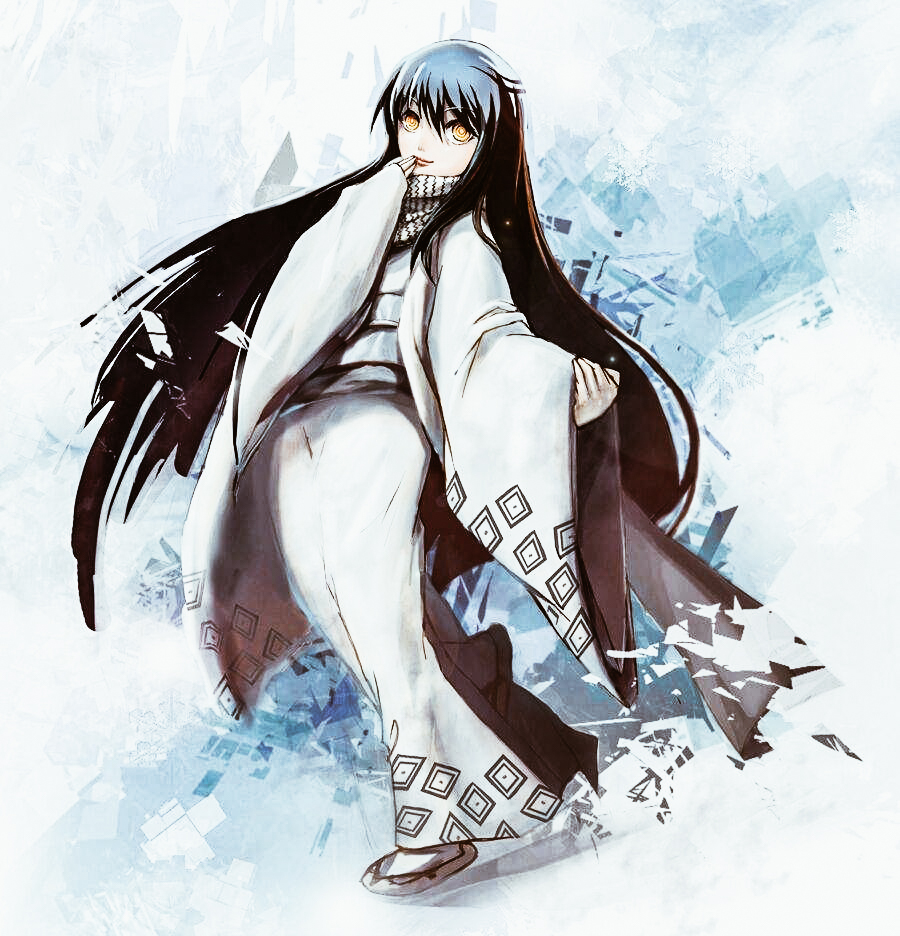
photo credits: aminoapps.com
La Yuki-Onna nell’età contemporanea
Come la sposa di Minokichi, la leggenda della Yuki-onna, crudele e romantica al tempo stesso, sembra conservare intatto il proprio fascino nei secoli.
Infatti, in epoca contemporanea ha ispirato numerosi film. Ricordiamo infatti Kwaidan (怪談) del 1965, diretto da Masaki Kobayashi, vincitore del premio speciale della giuria al Festival di Cannes. Kwaidan fu anche in lizza agli Academy Award con una nomination per il Miglior film in lingua straniera.
Al successo di questo film ha fatto seguito, nel 1968, Kaidan yukijoro di Tokuzô Tanaka, fino ad arrivare nel 2016 con Yuki-Onna, diretto e interpretato da Kiki Sugino.
La bella e letale donna delle nevi, nelle sue innumerevoli varianti, compare poi come protagonista o personaggio di spicco in una vastissima gamma di videogiochi, anime e manga. Ricordiamo Nurarihyon no Mago o Ranma ½, solo per citarne alcuni. Tuttavia, il suo intramontabile fascino continuerà ad ammaliarci ancora a lungo, col suo eterno, candido inverno.
Japan Folklore: Oni
Oni, yōkai del folklore Giapponese
Da creatura benevola ad essere maligno. Questa è la lenta trasformazione degli Oni (鬼), le creature mitologiche giapponesi che noi occidentali chiamiamo “demoni”, “troll” oppure “orchi”.
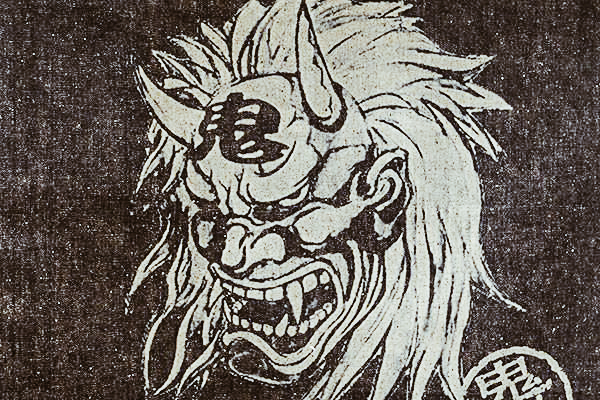
photo credits: tateandyoko.com
Prima dell’era Heian, gli Oni erano spiriti buoni in grado di allontanare il male. Tuttavia, durante questa era vennero relegati al ruolo di guardiani dell'inferno o torturatori delle anime dannate. Un esempio ne sono l’aka-oni (il demone rosso) e l’ao-oni (demone blu) descritti nella tradizione buddista, che assumono una connotazione negativa e diventano spiriti da tenere alla larga. Infatti, essi sono considerati come portatori di sventura o agenti delle calamità naturali.
Il loro aspetto non è certo rassicurante. Infatti, si dice che abbiano sembianze animalesche e mostruose, a volte con molti occhi e dalla pelle colorata (rosso, blu, nero, rosa oppure verde). Possono anche essere dotati di artigli, indossare pelle di tigre e portare con sé il kanabō (金棒, letteralmente: "bastone di metallo", una mazza da guerra chiodata usata nel Giappone feudale dai Samurai).
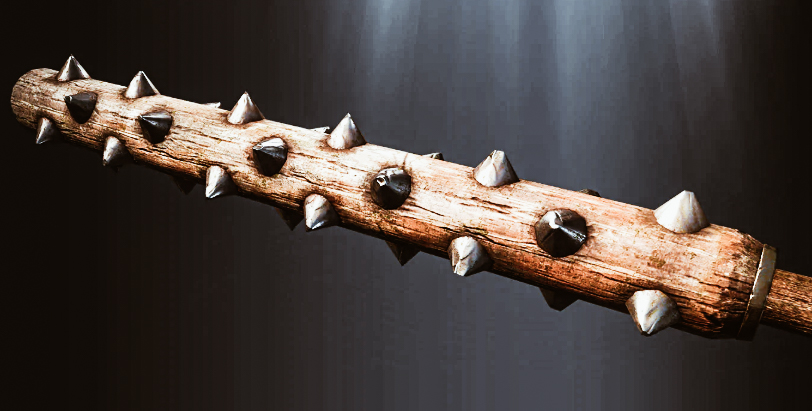
photo credits: forhonor.ubisoft.com
Oni fuori! Fortuna dentro!
Nell’epoca Nara, per scongiurare i disastri che questi spiriti potevano provocare, si praticava l’oniyarai 追儺, un rituale volto a cacciare il demone.
L’ultimo giorno di ogni anno una persona vestiva i panni del demone e veniva scacciato con archi e canne di legno di pesco. Nel tempo questa usanza si trasformò nei festeggiamenti del Setsubun, in cui le persone scagliano fagioli di soia fuori dalle case pronunciando: “Oni wa soto! Fuku wa uchi!” (Oni fuori! Fortuna dentro!).
Nonostante siano considerati spiriti malvagi, nella tradizione ci sono ancora delle tracce della loro natura benevola. Queste le ritroviamo durante le parate, quando alcuni uomini indossano il costume da Oni per allontanare la sfortuna. Inoltre sono anche raffigurati su delle tegole di alcuni edifici per lo stesso motivo.
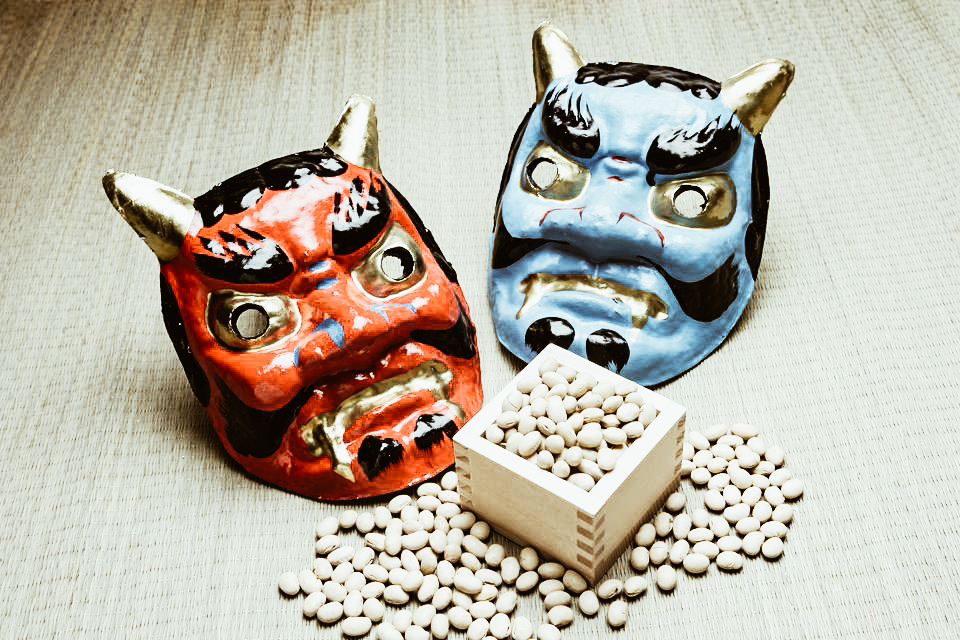
photo credits: tripsavvy.com
Le tante curiosità della cultura moderna
Oggi incontriamo questi demoni non solo nelle storie folkloristiche e nelle filastrocche per bambini, ma anche come protagonisti di proverbi! Infatti, si dice che “Anche negli occhi degli oni sorgono lacrime” (鬼の目にも涙) per indicare che anche il cuore più duro talvolta prova pietà. Un altro proveribio è “La moglie di un oni diventa una divinità oni” (鬼の女房鬼神がなる) che si rifà al nostro “il discepolo supera il maestro”.
Naturalmente era impensabile non usare una figura così particolare negli anime e nei manga! Ci sono infiniti richiami agli Oni, ed uno dei più famosi e conosciuti è Lamù, il personaggio principale del manga di Rumiko Takahashi. Ma non è il solo. Infatti anche ne Il sigillo azzurro di Chie Shinohara ha come protagonista proprio la Regina di questi demoni. C’è anche Shutendoji di Gō Nagai il cui titolo dell'opera rimanda alla leggenda di un oni dallo stesso nome.
Tra i videogiochi horror/avventura più giocati e divertenti non possiamo dimenticare Ao Oni. Qui l'antagonista principale è un demone blu il cui adattamento anime è stato trasmesso in Giappone tra il 2 ottobre 2016 e l'8 gennaio 2017. I 13 episodi da 3 minuti ciascuno sono stati distribuiti in streaming anche in Italia col titolo Aooni The Blue Monster (あおおに〜じ・あにめぇしょん〜). Nonostante la sua semplicità, questo gioco è agghiacciante grazie alla musichetta di sottofondo che conferisce al videogioco la giusta atmosfera spaventosa!

photo credits: giantbomb.com
Japan Folklore: Nippombashi Street Festa
photo credits: jnto.go.jp
Ad Osaka gli anime e i manga prendono vita
Ogni anno dal 2005, tra primi giorni e la metà di marzo, le strade di Den Den Town situate tra la stazione di Ebisucho e Nihonbashi sono chiuse al traffico automobilistico per il più grande evento cosplay di tutto il Giappone: il Nippombashi Street Festa (日本橋ストリートフェスタ).
Den Den Town è il distretto elettronico di Osaka che, grazie ai suoi negozi di giocattoli, videogiochi e computer, ha iniziato ad attrarre un gran numero di appassionati di manga e anime, trasformandosi ben presto in una delle destinazioni “sacre” per gli Otaku. Ogni anno il festival si arricchisce attirando non solo i cultori a livello locale, ma anche a livello internazionale!
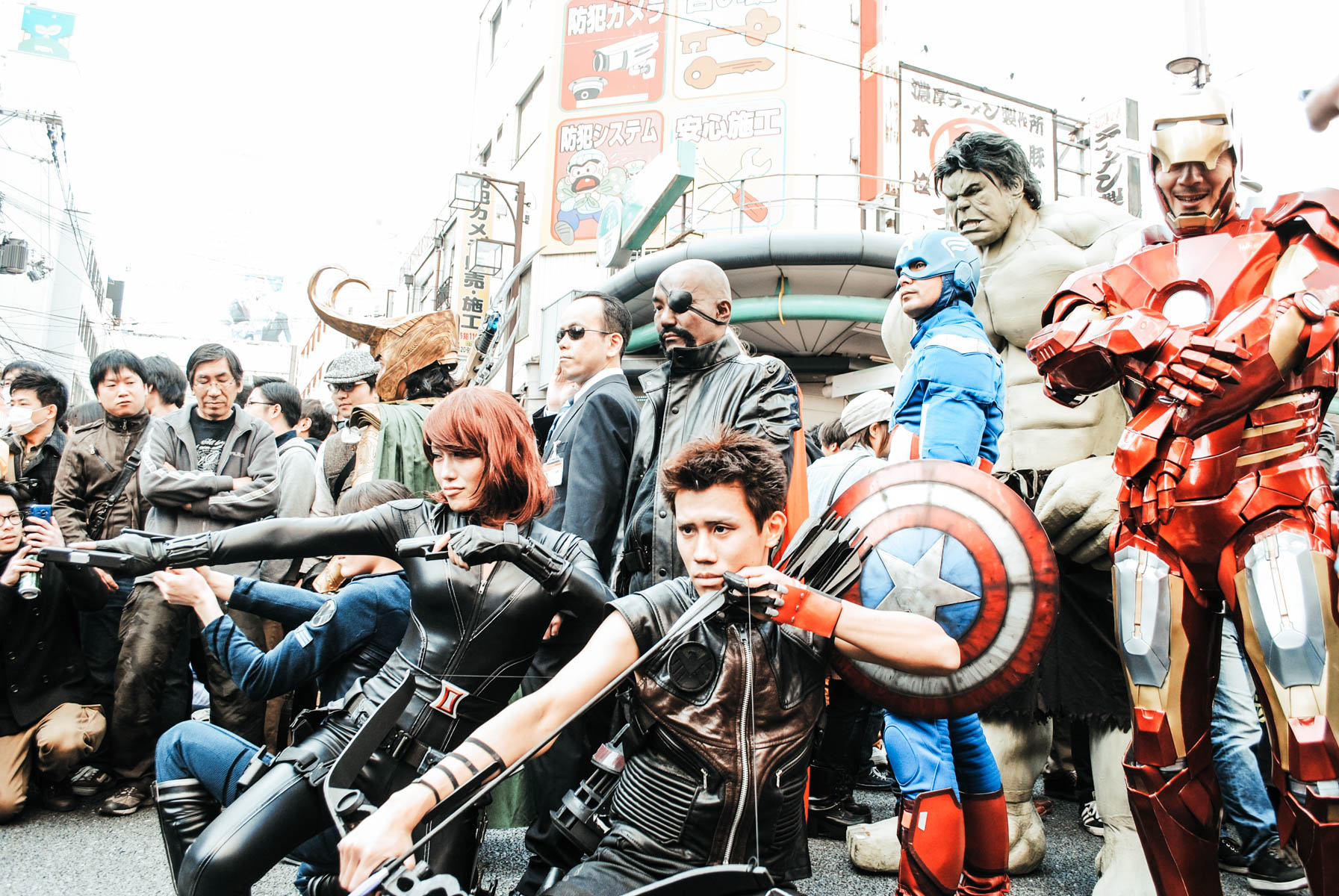
photo credits: reddit.com
Il Festival ha inizio!
I preparativi per l’evento hanno inizio all’incirca verso le 11:00 con la chiusura al traffico della strada, alla cui cima è posto il palco principale sul quale si alternano ospiti, cosplayer e sponsor per tutto il giorno.
La cerimonia di apertura comincia alle 12:00 quando per strada si crea un passaggio per la sfilata dei 1.000 cosplayer migliori di tutto il mondo. Dopo la sfilata, i cosplayer si esibiscono e posano per tutti coloro che desiderano avvicinarsi al proprio personaggio preferito. Molti di loro approfittano dell'evento per promuovere i propri account socials, scrivendone l’indirizzo su lavagne bianche o cartelli appoggiati accanto a loro mentre vengono immortalati nelle pose studiate anticipatamente.
Ovviamente l’evento non è aperto solo ai professionisti, ma centinaia e centinaia di persone indossano il proprio costume. Che questo appartenga alla cultura pop, agli anime, ai manga, ai videogiochi o persino ai cartoni animati e personaggi dei fumetti americani (in particolare Marvel, Adventure Time e Star Wars) non ha importanza, quasi 10,000 persone all’anno si trasformano nel proprio eroe! Naturalmente, il festival è gratuito, ma se si desidera partecipare alla parata, è necessaria una quota di iscrizione che si aggira sui 1,500 yen.
L’evento è anche l’occasione perfetta per poter reperire i disegni unici targati Nippombashi Street Festa e goods esclusivi.

photo credits: nippombashi.jp
Il progetto di scambio culturale tra Giappone e Francia e un ambasciatore d’eccezione
Dal 2018, anno del 160° anniversario di amicizia tra Francia e Giappone, è stato promosso il 「Japan-France pop culture Exchange project」al fine di approfondire lo scambio culturale tra manga, animazione, musica e altri aspetti della cultura pop giapponese con la Francia in collaborazione con il「Japan Expo」.
Per divulgare l’evento e renderlo ancora più vivo, KAMIJO, il talentuoso artista giapponese divenuto particolarmente famoso in Francia, è stato scelto come ambasciatore del progetto.
Quest’anno il Nippombashi Street Festa si terrà il 9 marzo e sarà l’occasione perfetta per immergersi non solo nel mondo magico della fantasia, ma anche in quello musicale!









